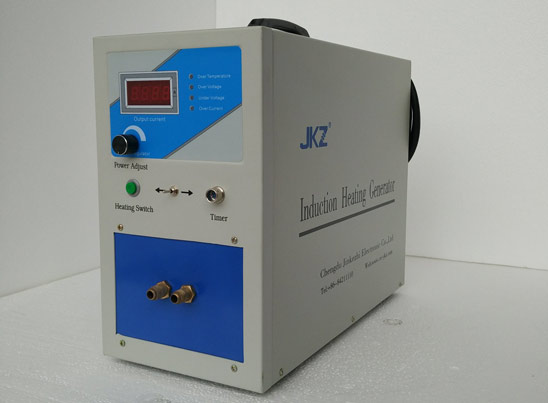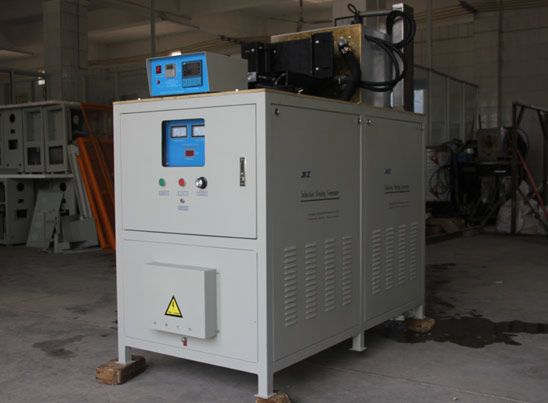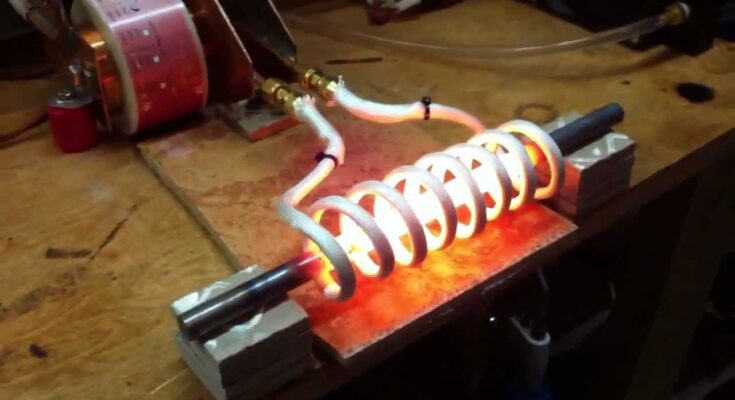Induction heaters represent a category of electrical heating systems that harness the phenomenon of electromagnetic induction to raise the temperature of objects without the need for physical contact. This ingenious technology is rooted in the pioneering work of Michael Faraday during the 19th century. Due to their exceptional efficiency, precise temperature control capabilities, and capacity to rapidly and uniformly heat objects, induction heaters find extensive utility across a diverse range of industries and processes. In this overview, we’ll delve into the fundamental principles behind their operation and explore some common applications.
How Does a Induction Heater Work
An induction heater uses a high-frequency alternating current (AC) in a coil to create a rapidly changing magnetic field. When a conductive object is placed in this field, it induces eddy currents within the object due to electromagnetic induction. These eddy currents generate heat in the object, heating it rapidly and uniformly. The heater’s temperature control is achieved by adjusting the frequency and intensity of the AC current. Induction heaters are efficient and widely used in various industries.
Components of an Induction Heater
Induction Coil: This is a coil of wire through which the high-frequency AC passes. It generates the magnetic field required for induction heating.
Power Supply: The power supply provides the necessary high-frequency AC to the induction coil. The frequency and power output can be adjusted as needed for specific applications.
Work Coil: The work coil is the part of the induction heater that is in close proximity to the object being heated. It is designed to efficiently transfer the magnetic field to the object for heating.
Cooling System: Induction heaters generate heat, so they require a cooling system to prevent overheating of the components, especially the induction coil.

Induction Heater for Metal Heating Areas
An induction heater for metal heating is a specialized device designed to heat metal objects quickly and efficiently using electromagnetic induction principles.Induction heaters for metal heating are utilized in various applications, including:
Metal hardening and tempering
For example, in metal hardening, heat induction machine is frequently used for hardening metals like steel and aluminum. It can rapidly heat specific areas of a metal part to high temperatures, followed by a rapid quenching process to create hardened surfaces.
Induction Heater for Brazing
In manufacturing industries, induction heaters, like heat frequency machine, are used for brazing and soldering applications. They precisely heat the joint area of metal parts, allowing filler materials to melt and create strong, leak-proof bonds. This is particularly valuable in the automotive, aerospace, and electronics industries.
Induction Annealing
Induction heater is also employed for annealing processes to relieve stress, soften metals, and improve their mechanical properties. This is crucial in the production of components like springs, wires, and automotive parts where material flexibility and ductility are required.

Melting and Casting of Metals
Foundries utilize induction heating to melt various metals, including steel, iron, and non-ferrous alloys. The ability to precisely control temperature and heating rates makes induction melting ideal for casting applications, enabling the creation of intricate and high-quality metal components.
Shrink Fitting of Metal Components
In manufacturing and maintenance, induction heaters, such as 30KW induction heater, are used for shrink fitting. This involves heating one metal component to expand it, allowing for easy assembly onto another metal part. After assembly, as the heated component cools and contracts, a tight and secure fit is achieved.
Heat Treating and Forging of Metal Components
Induction heating is integral in heat treating and forging processes. It is used to bring metals to the desired temperature for shaping and improving their mechanical properties. Forging applications range from making automotive parts to manufacturing aircraft components.
Summary
The article discusses the working principle and applications of induction heaters. Induction heaters are electrical heating systems that use electromagnetic induction to heat objects without direct contact. They work by generating a high-frequency alternating current (AC) in a coil, which creates a rapidly changing magnetic field. When a conductive object is placed within this field, it induces eddy currents in the object, leading to heat generation due to electrical resistance.
Furthermore, the article explores various applications of induction heaters for metal heating, emphasizing their efficiency, precision, and ability to heat objects quickly and uniformly. These applications include metal hardening, brazing, soldering, melting and casting, annealing. Induction heaters are versatile tools that play a crucial role in modern manufacturing processes and offer numerous benefits for a wide range of applications.
FAQs about Induction Heaters
- What materials can be heated with induction heaters?
Induction heaters work best with ferrous metals, such as iron and steel, due to their magnetic properties. They can also heat some non-ferrous metals like copper and aluminum if they have a conductive base. However, materials that are not magnetic will not respond effectively to induction heating.
-
Do induction heaters use a lot of electricity?
Induction heaters are generally energy-efficient, using less electricity compared to traditional heating methods. They heat up quickly and directly target the material, minimizing wasted energy. The actual power consumption depends on the specific model and application, but overall, they are designed to save energy while providing effective heating.
- Is induction heating safe?
Yes, induction heaters are generally safe as they don’t produce flames, and the surface remains cooler to the touch compared to traditional heating methods.



